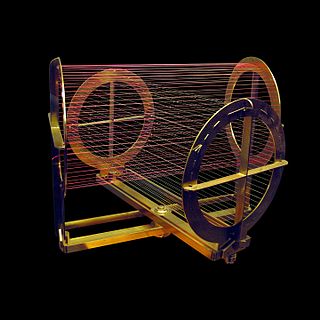Top Qs
Timeline
Chat
Perspective
Instructional materials
Materials used to impart knowledge From Wikipedia, the free encyclopedia
Remove ads
Instructional materials, also known as teaching materials, learning materials, or teaching/learning materials (TLM),[1] are any collection of materials including animate and inanimate objects and human and non-human resources that a teacher may use in teaching and learning situations to help achieve desired learning objectives. Instructional materials may aid a student in concretizing a learning experience so as to make learning more exciting, interesting and interactive. They are tools used in instructional activities, which include active learning and assessment.[2] The term encompasses all the materials and physical means an instructor might use to implement instruction and facilitate students achievement of instructional objectives.
This article relies largely or entirely on a single source. (June 2018) |

Remove ads
Background
The value of instructional materials as a pedagogical aid can be seen in Vachel Lindsay's poem "Euclid":
Old Euclid drew a circle
On a sand-beach, long ago.
He bounded and enclosed it
With angles thus and so.
His set of solemn greybeards
Nodded and argued much
Of arc and of circumference
Diameter and such.
A silent child stood by them
From morning until noon,
Because they drew such charming
Round pictures of the moon.[3]
Remove ads
Types of instructional materials
This section needs expansion. You can help by adding to it. (July 2018) |
Instructional materials can be classified by type, including print, visual, and audiovisual, among others:
Remove ads
Evaluation of instructional materials
Summarize
Perspective
Peer-Reviewed Instructional Materials Online (PRIMO) Committee
The Peer-Reviewed Instructional Materials Online (PRIMO) Committee "'promotes and shares peer-reviewed instructional materials created by librarians to teach people about discovering, accessing and evaluating information in networked environments.' In doing so, it reviews librarian-created online tutorials dealing with information literacy and critical thinking skills, and highlights the highest-caliber projects through its "Site of the Month" posts on the ACRL Instruction Section blog.[4][5] PRIMO's goal is to provide librarians quality tutorials for instructional use on a variety of topics in order to save time, effort and cost. PRIMO accepts non-promotional online instructional material intended for undergraduate or graduate-level audiences emphasizing quality over comprehensiveness.
Instructional Materials Evaluation Tool
"Student Achievement Partners is a nonprofit organization that assembles educators and researchers to design actions based on evidence that will substantially improve student achievement."[6] The tool provided by the organization is the Textbook Alignment and Adaptations Instructional Materials Evaluation Tool.[7] The goal of this tool is to assist in evaluation textbooks or series of textbooks for alignment to the Common Core State Standards Initiative.
See also
References
Wikiwand - on
Seamless Wikipedia browsing. On steroids.
Remove ads
